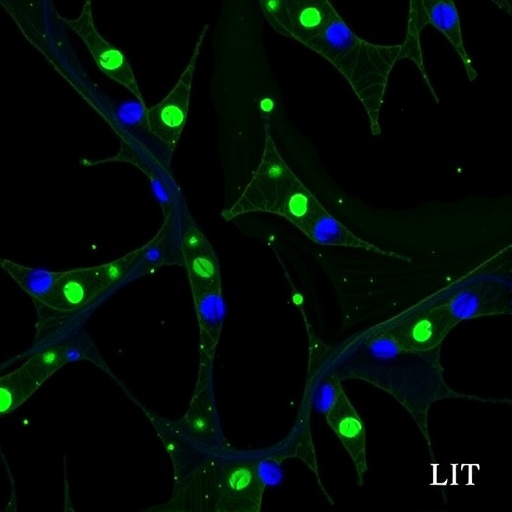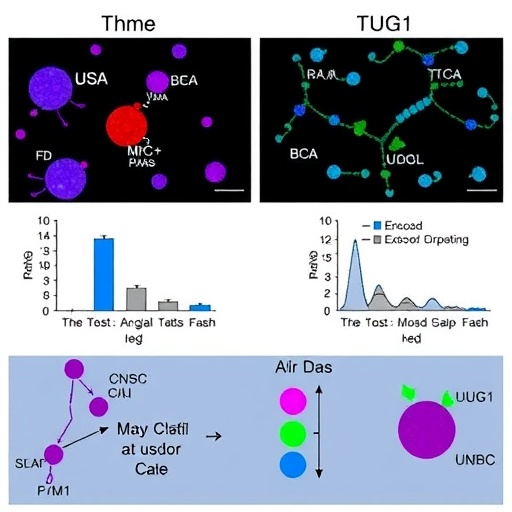Massachusetts General study finds ‘passenger’ mutations can be induced by DNA structures in genes unrelated to cancer development
A study by investigators from the Massachusetts General Hospital (MGH) Cancer Center has found that, contrary to common assumptions, the fact that a specific genetic mutation frequently arises in particular tumors may not signify that the mutation drives cancer development and progression. Their article published in Science describes how DNA single strands that fold back on themselves in what is called a “hairpin” structure appear highly sensitive to mutation by a gene-editing enzyme expressed in many cancers. But many of these mutation “hotspots” occur in genes that are totally unrelated to cancers, including many in noncoding areas of the genome.
“A typical cancer genome will have five to ten driver mutations and thousands or even millions of these ‘passenger’ mutations that are just along for the ride,” says Michael Lawrence, PhD, of the MGH Cancer Center, co-senior author of the Science article. “The thinking has been that, if the exact same mutation occurs in many different patients’ cancers, it must confer a fitness advantage to the cancer cells. While the recurrence-based approach to identifying cancer driver genes has been successful, it’s also possible that certain positions in the genome are just very easy to mutate.”
Although much is known about how patterns of gene mutation are affected by small-scale structures – such as the groups of three bases called trinucleotides – or by the large-scale “compartments” into which DNA is organized in the nucleus, relatively little is known about the effects of “mesoscale” DNA structures that may extend 30 base pairs around the site of a mutation. Previous investigation by others into breast cancer mutation hotspots associated with APOBEC enzymes identified DNA “palindromes” – in which a specific sequence on one side of a mutation is repeated in reverse on the other side – suggesting the stem-loop hairpin structure.
The MGH team’s analysis of data from The Cancer Genome Atlas and other sources focused on the potential influence of such mesoscale structures on the frequency and recurrence of mutations. They specifically investigated mutations associated with the APOBEC family of proteins, which – among many other functions – helps protect against viruses that enter cells by altering the viral genome. Many types of cancer cells are known to activate APOBEC enzymes and, in contrast to other cancer-associated mutations that preferentially accumulate in a specific region of the genome, APOBEC-associated mutations are distributed evenly throughout the genome, frequently occurring in DNA hairpins.
Their experiments revealed that the APOBEC3A enzyme commonly mutates cytosine bases located at the end of a hairpin loop, converting them into uracils, even in genes that have little or no association with cancer. In contrast, recurrent APOBEC-associated mutations in known driver genes were at ordinary sites in the genome, not the special hairpin sites that are especially easy for APOBEC3A to mutate. This suggests that the driver mutations, while possibly being difficult to generate, do confer a survival advantage on cancer cells; and that is why they are frequently observed in patients with cancer.
“Several APOBEC3A hairpin hotspots have already been claimed to be drivers, based solely on their frequency and with no functional evidence,” says co-senior author Lee Zou, PhD, of the MGH Cancer Center. “Our findings suggest that these are simply ‘passenger hotspots’ – a term that would have been considered an oxymoron until now – and that researchers’ time would be better spent on mutations that have been proven to alter the properties of cells in ways that drive their malignant proliferation.”
Lawrence adds, “There are so many important questions in cancer research, and anything we can do to avoid investigators’ pursuing false leads would save time and money. But the challenge of distinguishing drivers from passengers is also central to other important questions: How many drivers does it take to make a cancer? What is the process by which a normal cell becomes cancer? Why do some cancers appear to have no driver mutations? Our colleague professor Gad Getz has shown that there must be considerable ‘dark matter’ in the genome to explain these driver-negative cases. Having an accurate inventory of drivers requires being able to see through passenger mutations that masquerade as drivers, and our results suggest there might be even more genomic dark matter!”
###
Lawrence is an assistant professor, and Zou is a professor of Pathology at Harvard Medical School. Both are also associate members of the Broad Institute of MIT and Harvard. Additional co-authors of the Science paper are lead author Rémi Buisson, PhD, a former postdoctoral fellow in the Zou lab and now an assistant professor at the University of California, Irvine; co-authors Adam Langenbucher, Eugene Kwan, PhD, and Cyril Benes, PhD, MGH Cancer Center; and Danae Bowen, UC/Irvine. Support for the study includes National Institutes of Health Pathway to Independence Award 1K99CA212154 and NIH grants GM076388 and CA197779.
Massachusetts General Hospital, founded in 1811, is the original and largest teaching hospital of Harvard Medical School. The MGH Research Institute conducts the largest hospital-based research program in the nation, with an annual research budget of more than $925 million and major research centers in HIV/AIDS, cardiovascular research, cancer, computational and integrative biology, cutaneous biology, genomic medicine, medical imaging, neurodegenerative disorders, regenerative medicine, reproductive biology, systems biology, photomedicine and transplantation biology. The MGH topped the 2015 Nature Index list of health care organizations publishing in leading scientific journals and earned the prestigious 2015 Foster G. McGaw Prize for Excellence in Community Service. In August 2018 the MGH was once again named to the Honor Roll in the U.S. News & World Report list of “America’s Best Hospitals.”
Media Contact
Katie Marquedant
[email protected]
http://dx.




